With a little insider secret and just a few minutes, you can protect your kitchen with cabinet hinge restrictor clips. This might be my easiest DIY project yet!
What do you do if you’ve got brand new kitchen cabinets, and you love them, but you’re worried because they keep opening into each other and the dishwasher and the fridge? And you’re worried that your gorgeous new handles are going to bang holes into the things they’re running into? #askingforafriend
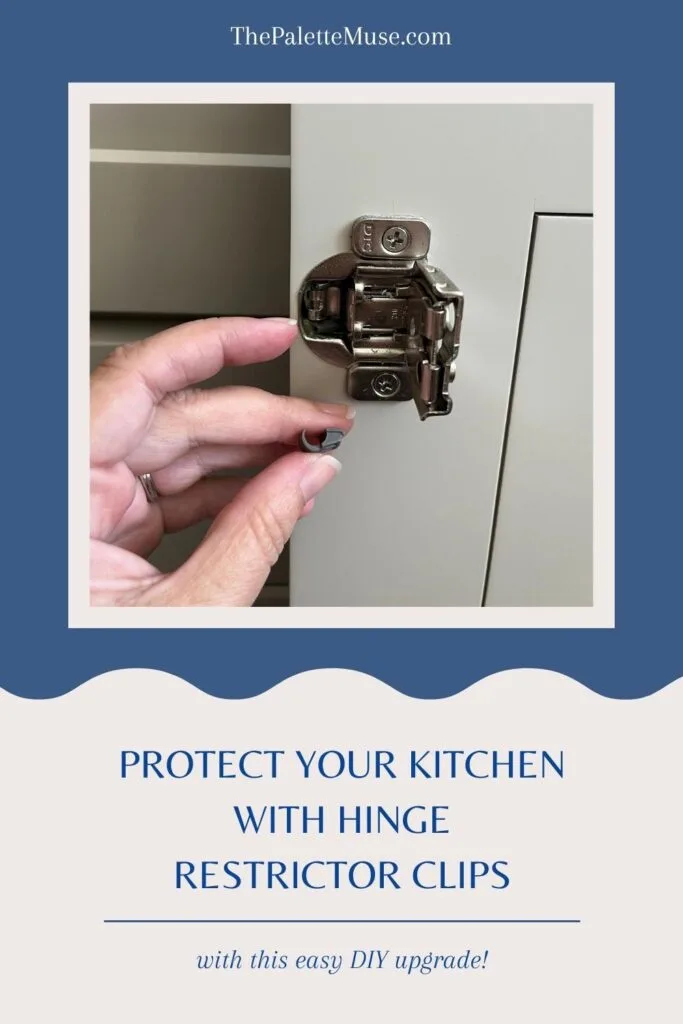
This post contains affiliate links. If you make a purchase, I may receive a small commission at no additional cost to you.
You need Cabinet Hinge Restrictor Clips
Since we remodeled our kitchen earlier this year, I have been in love with our cabinets. Not only do they look great, but they work so well.
I know that sounds silly, especially if you’ve never had a kitchen with sub-par cabinetry, but believe me when I tell you there is a big difference between 40 year old custom cabinets, and new made-to-order cabinets.
These babies have soft close everything. Every drawer closes silently. Every door gently glides back into place. And there’s not a squeak to be heard in the whole kitchen.
However.
I soon noticed that a few of my cabinet doors open too far, sometimes banging into other doors or appliances. After talking to my cabinet guy, I learned this is a normal problem for modern kitchen layouts.
Pretty much everything in a standard kitchen layout is organized into 90 degree angles. But new hidden-hinge cabinetry doors usually open 110 degrees. So you might end up with a problem like this:

When two pieces of hardware slam into each other, it’s not great for the hardware. But even worse is if the hardware runs into something else. In my case it was the front of my dishwasher!
I knew that if I let this go on too long (or let anyone else in my family open that cabinet) I would end up with a knob-shaped dent in my dishwasher.
It was time to get some angle restrictor clips.
What is an Angle Restrictor Clip?
Also known as a cabinet hinge restrictor clip, these little doohickies keep your cabinet doors from swinging open more than an 86 degree angle, so they don’t overstep their 90 degree box they were designed to stay in.
Now, if you’re having your new cabinets designed and installed by a full service renovation company, they should do this for you. Ideally, they would identify the problem and solve it before leaving the work site, but if not, you should be able to point out any problem areas and they’ll take care of it.
However, if you’re mostly DIY-ing the job like we did, you may need to do this yourself. See? It’s right there in the name.
The thing you have to know is what kind of hinge your cabinets use, in order to get the right fitting clips.
Simply open a cabinet door and look for a brand name somewhere on the hinge.
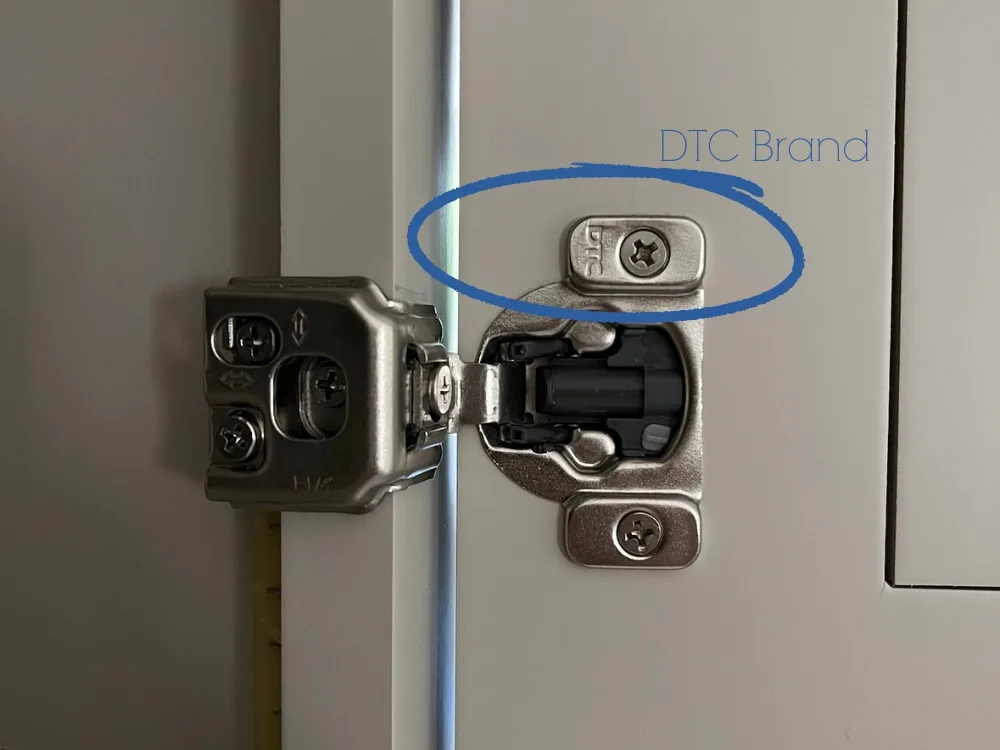
Mine are by DTC, but other common brands are Ravinte and Blum. You’ll want to make sure you get clips that are designed for your hinges, as there are subtle differences between brands.
Here are the actual clips we used: DTC Angle Restrictor Clips
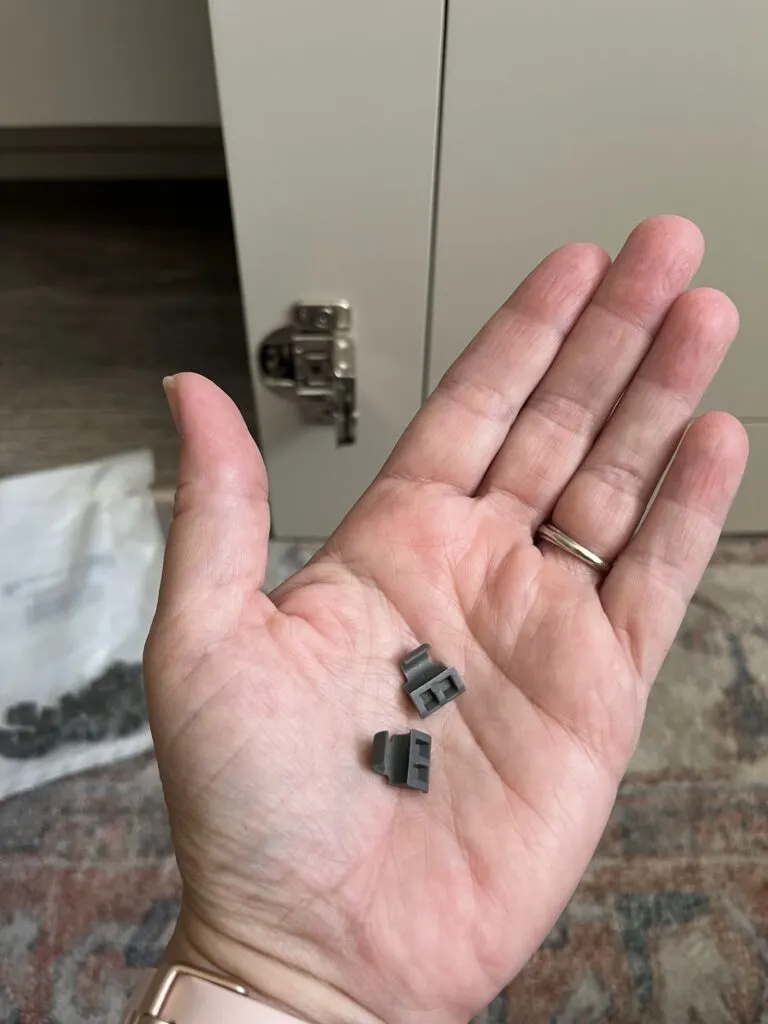
You’ll need a clip for each hinge, so count how many doors you need to protect and multiply that by the number of hinges per door. Most standard size cabinet doors have two hinges, and tall doors usually have three or more.
How to Install Cabinet Hinge Restrictor Clips
Installing these clips couldn’t be easier. The only hard part is you have to remove the doors first. To remove the doors, you’ll need a screwdriver.

Bonus tip: If you’re doing multiple doors, save yourself LOADS of time by using an electric screwdriver like this one. I use mine for so many projects around the house!
Simply unscrew all the hinges from the cabinet face frame, leaving the side attached to the door.
Close the hinges, so the back interior part of the hinge is exposed.
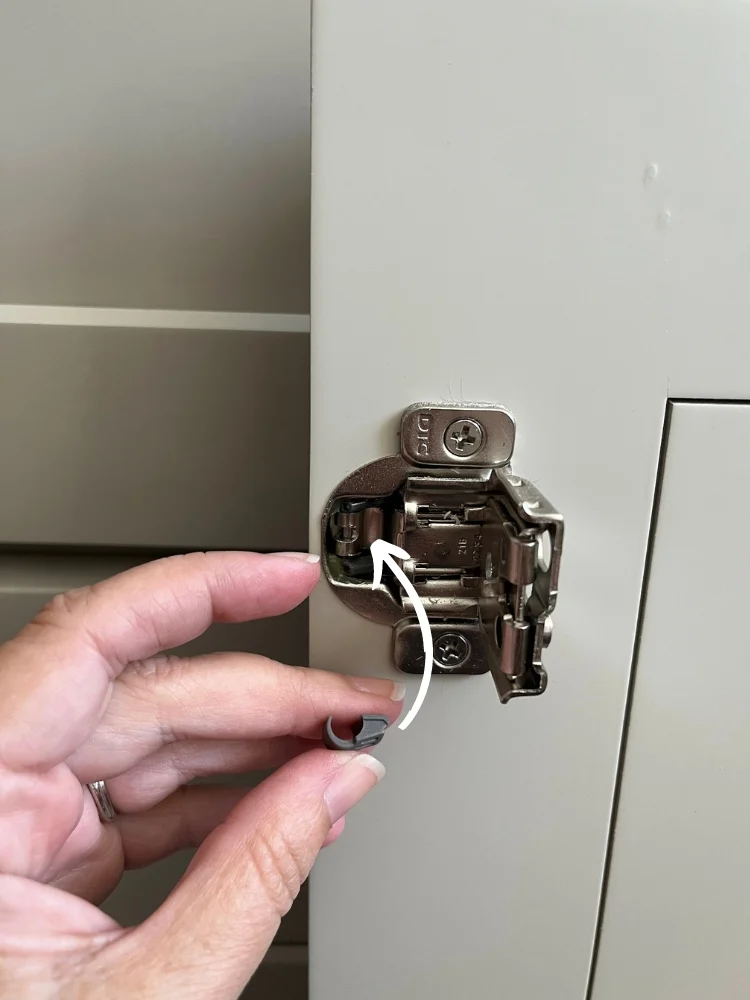
Line up an angle restrictor clip in the right direction on the hinge (as shown by the brand’s installation guide) and pop it into the gap in the hinge. Mine fit right around a little cylinder in the hinge.
Basically, the clip just takes up a little of the space inside the hinge, keeping the hinge from opening all the way.

Apply restrictor clips to all the hinges on that door, and reattach the door to the cabinet frame by screwing the hinges back onto the face frame. (You might want to get help for this part. Or if no one else is around while you’re working, use a foot to hold up the door while you’re screwing it on.)

That’s all there is to it!
Repeat the process for each cabinet door that opens too far, and now you can rest easy knowing that your new kitchen won’t get banged up (at least not from your cabinet doors opening into each other!).
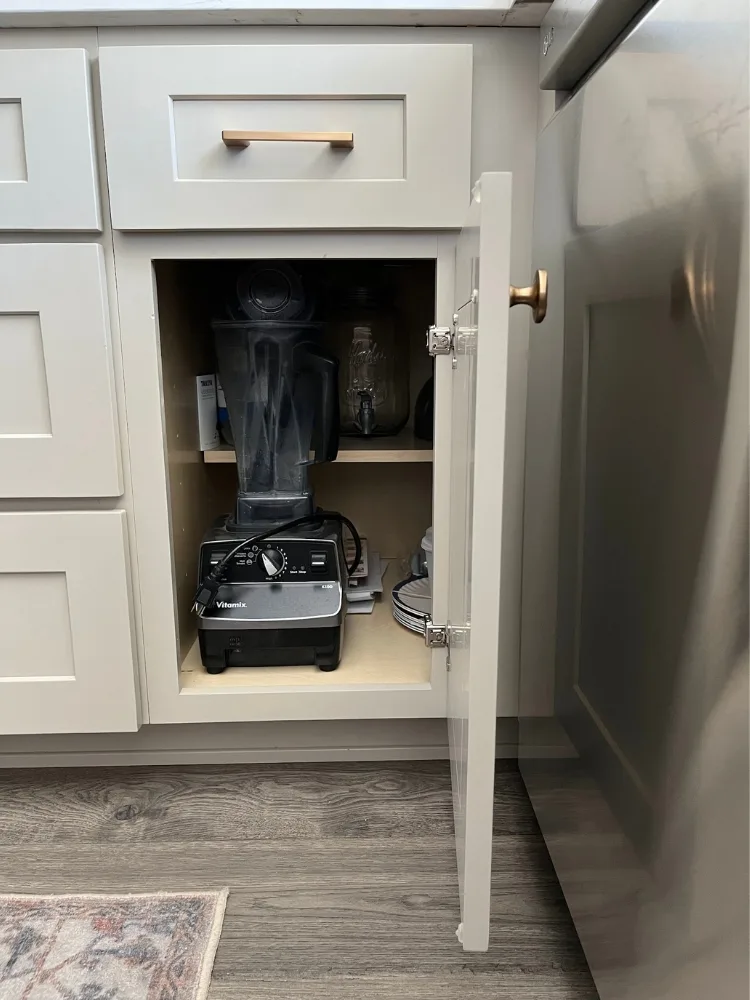
I hope this little insider secret helps you if you’re struggling with your cabinet doors opening too far. Let me know if you have any questions by leaving a comment below…

Jean
Friday 16th of February 2024
Thank you! I had heard about these hinge restrictors, but I totally forgot what they were called, what they looked like and how they were installed. I need a set for a bath vanity cabinet door that hit the wall when its opened. Thank you for this detailed post.
Meredith
Monday 19th of February 2024
Yay! I'm so glad this was helpful to you!